For those taking a break
from strolling the Ginza,
or who love museumsLeisurely Course
Time required
60 min.

To visit The Seiko Museum Ginza, please make a reservation.

2
Always one step ahead of the rest
2F/ Floor map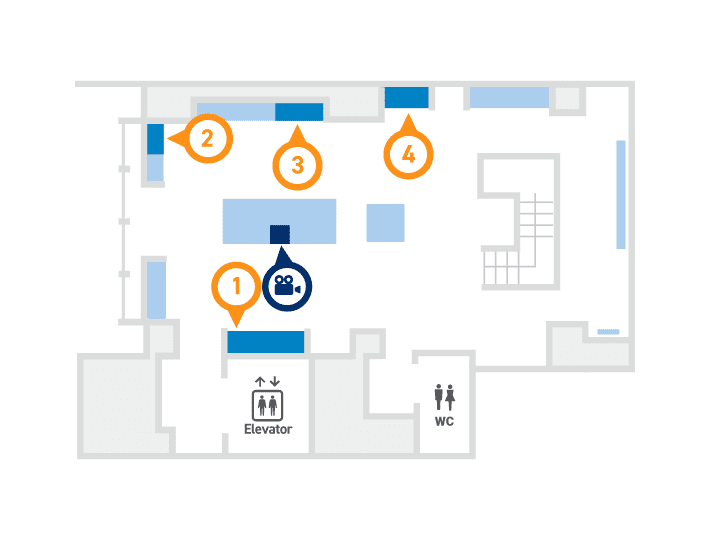

1
Birth and Early Years “I’ll Do it! I’ll Run a Clock Shop!”
Kintaro Hattori, the founder of Seiko, was born in Ginza in 1860. Seeing Japan’s rapid modernization, his ambition was to become a timepiece dealer. A Map of Ginza from the Edo period (1603-1867) and prints showing the new world of the Meiji era (1868-1912) help take us back to the atmosphere that young Kintaro grew up in.

2
Seiko's First Eight-Day Wall Clock
Seikosha’s first-ever product. In 1892, Kintaro established Seikosha in what is now Sumida Ward to manufacture clocks for his shop. With only about a dozen employees, this small workshop succeeded in creating wall clocks just two months after it started operations.
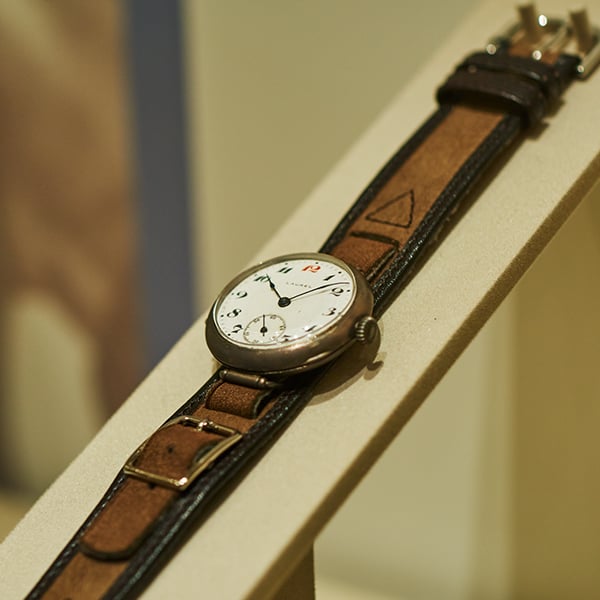
3
Japan's First Wristwatch, Laurel and Disassembled Parts
Japan’s first wristwatch, launched in 1913. Disassembled parts can be seen in the drawer. The Laurel was difficult to manufacture, as it was about a fifth the size of normal watches. Only about 30 to 50 could be produced each day.
- Recommended Points
- You would be surprised to see and the tiny size of the parts and their precision of disassembled sample. Incredibly, it was made without drawings.
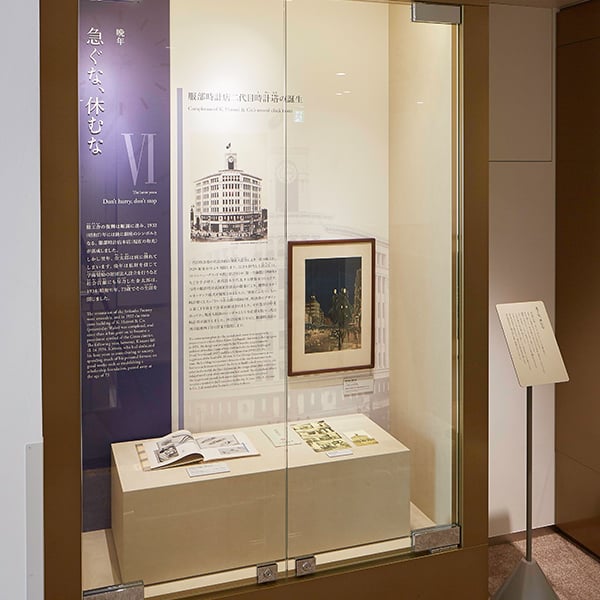
4
The Birth of the Second Clock Tower of K. Hattori & Co., Ltd.
The Wako Main Building stands overlooking the Ginza 4-chome crossing. Completed in 1932, this was the second clock tower created by K. Hattori Co. This section introduces the little-known tale of how it become the symbol of Ginza, along with meterials from its construction.
- Recommended Points
- Look up at the ceiling in the middle of the floor and check out the store logo "H" of K. Hattori Co.! It uses the same pattern as the relief on the outside walls of Wako.
Recommended Movie
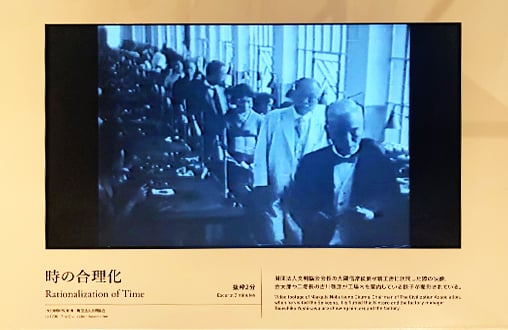
Rationalization of Time
Rare footage of Kintaro Hattori, Seiko’s founder, and Tsuruhiko Yoshikawa, the factory foreman showing around the Seikosha Factory restored after the Great Kanto Earthquake.
3
From time indicated by nature to human-made time
3F/ Floor map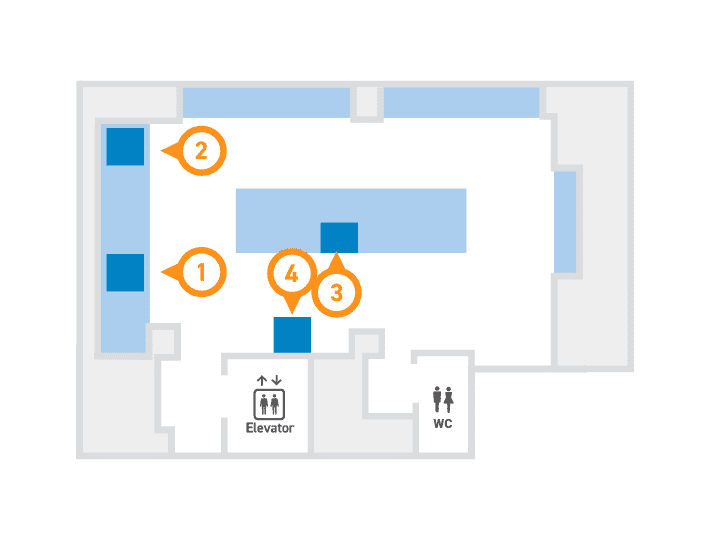

1
Incense Clock
Introduced from China, they were used at temples in Japan starting in the Nara period (710-794). As the incense generally burns at a constant speed, the burned length could be used to tell how much time had passed.
- Recommended Points
- In this video, you can see an incense clock being used at Bishamon Temple in Kyoto.

2
A Prototype for London's Big Ben
This is a prototype of the tower clock “Big Ben,” at the British Houses of Parliament, built in 1854. The pendulum mechanism used in this clock is extremely accurate, and even today, Big Ben is accurate to within about a second a day.
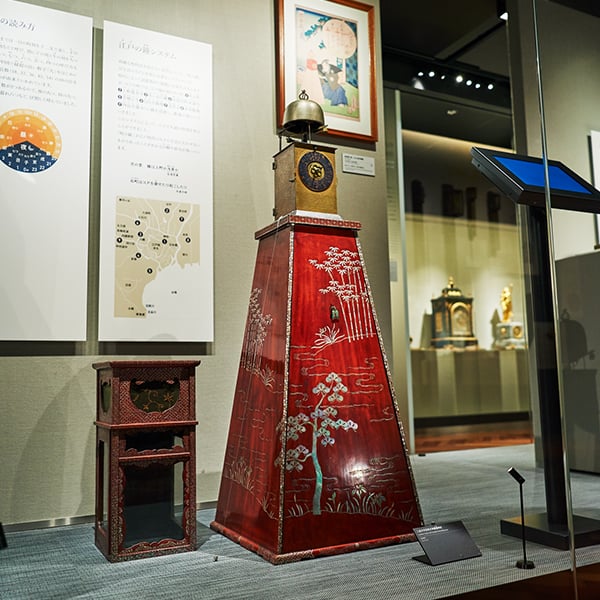
3
Lantern Clock with Double Foliot Balance
This Wadokei, or Tradiotional Japanese clock, is decorated beautifully with mother-of-pearl.
The Wadokei is the Japanese original clock made in Edo period using the technology of western mechanical clocks. A seasonal time system which is based on the changing length of the day and night was used in Japan and also was applied for this clock.
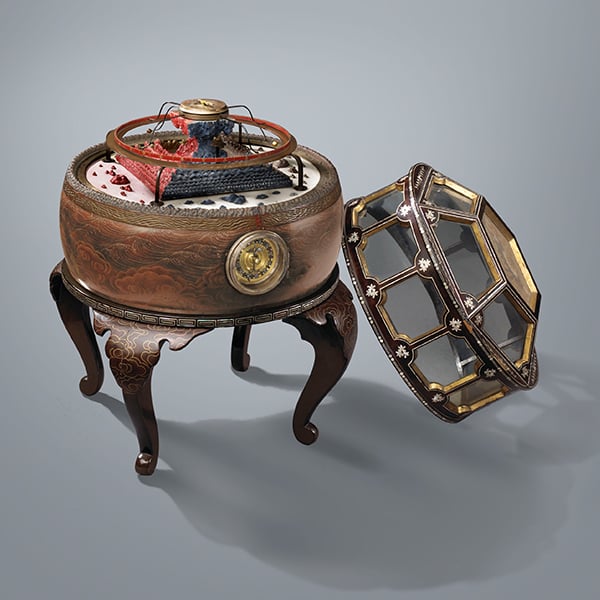
4
Shumisengi
This is an astrological clock that operates by having the moon and sun rotate around Mount Sumeru, a mythical sacred mountain in Asian cosmology. This was a method to convey the Buddhist theory of celestial motion, devised in India to the people in the Edo period. There are very few clocks like this left in the world.
- Recommended Points
- Created by Tanaka Hisashige, a co-founded of Toshiba known as the Master of Automatons and referred to as “the Edison of the East.”
4
Precise (Seiko) time
4F/ Floor map

1
Seikosha Railway Watch
Foreign-made railway watches were used for many years in Japan after the 1868 Meiji Restoration, but in 1929, the Ministry of Railways approved the Seikosha as the first Japanese-made railway watch.

2
Movement Presented at the Neuchatel Observatory Competition
This is the actual movement presented at the Swiss Neuchâtel Observatory Competition in timepiece accuracy. In 1967, the Daini Seikosha Factory and the Suwa Seikosha Factory took second and third place in the Company Awards, the first Japanese company to do so, demonstrating the precision of their timepieces.
- Recommended Points
- Seiko took all the top ranks in the mechanical timepiece division at the following year’s Swiss Geneva Observatory Competition.

3
TV Watch
The world’s first watch with a television launched in 1982. With a 1.2 inch screen, this revolutionary watch could receive all Japanese TV broadcasts as well as FM radio.
- Recommended Points
- The TV Watch which attracted a lot of attention was listed in the Guinness Book of Records as the world’s smallest television in 1984.
Recommended Movie
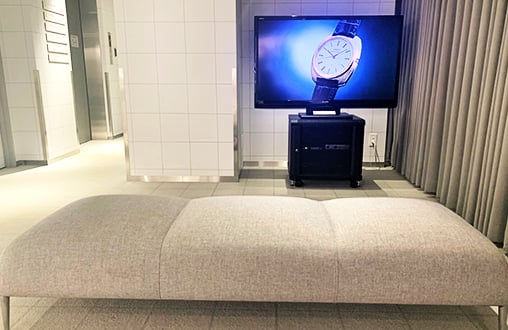
The story of Seiko
The history of Seiko, from its founding to the present day, is explained by Group CEO Shinji Hattori, with a focus on major events and products.
5
A variety of times
5F/ Floor map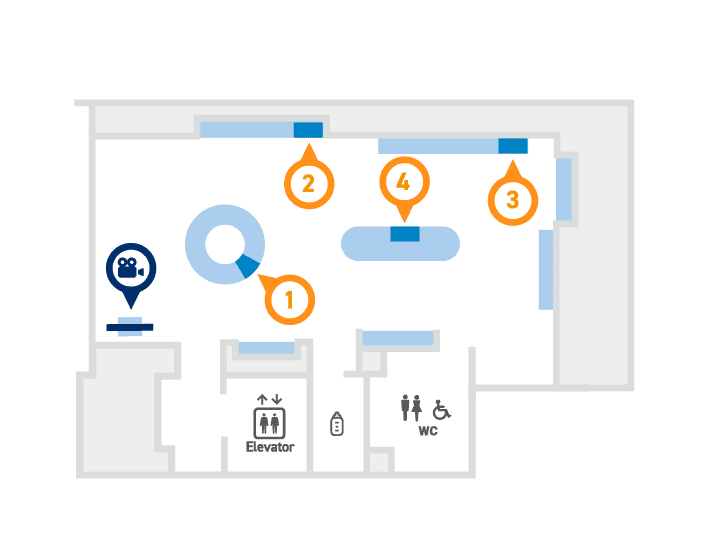

1
Spring Drive
Launched in 1999, it was unlike any other watch in the world. Driven by the same type of mainspring found in mechanical watches,
Seiko’s unique system used accurate signals from the quartz oscillator in quartz watches to keep time.
- Recommended Points
- Registered in 2021 as one of the Essential Historical Materials for Science and Technology certified by the National Science Museum, Japan.
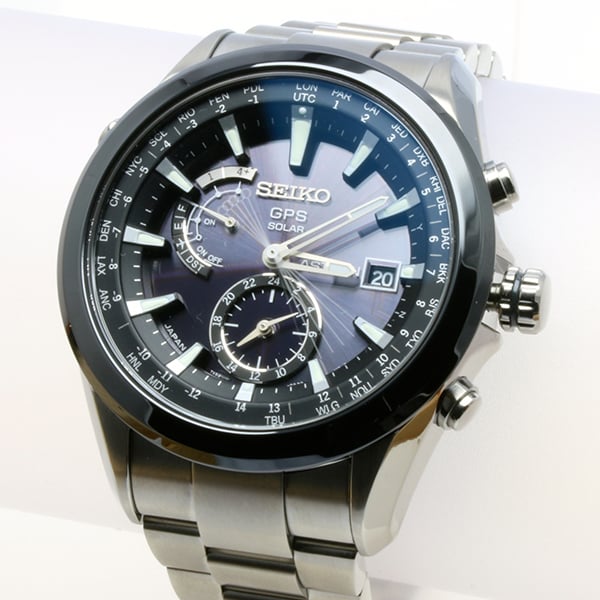
2
Astron GPS Solar
The world’s first GPS solar-powered watch was launched in 2012. This next-generation wristwatch is solar-powered, meaning it can keep going without the need to change any batteries. With the push of a button, it receives accurate time information from atomic clocks in the GPS satellites, no matter where in the world the wearer is.

3
Rivoli
In the 1980s, the asymmetrical design of Rivoli was exported overseas. This series, named after the “Rue Rivoli” in Paris, was loved in Europe for its unique and bold design, and responded to the diversification of fashion.
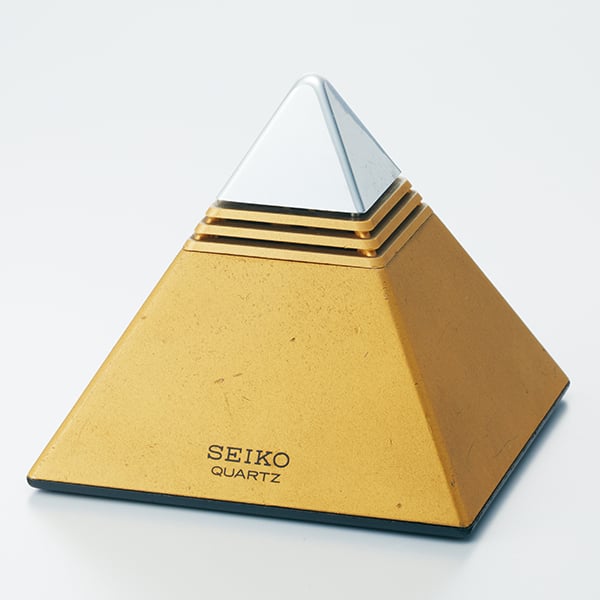
4
Pyramid Talk Clock
The radical design of this unique clock removed the display on the face. Instead, a synthesized voice announces the time with a touch at the top of the pyramid. The digital time display panel is at the bottom. Thanks to its compact size, it was sold around the world.
- Recommended Points
- Winner of the Good Design Award in 1984, and also it was added to the list of Essential Historical Materials for Science and Technology in 2020.
Recommended Movie
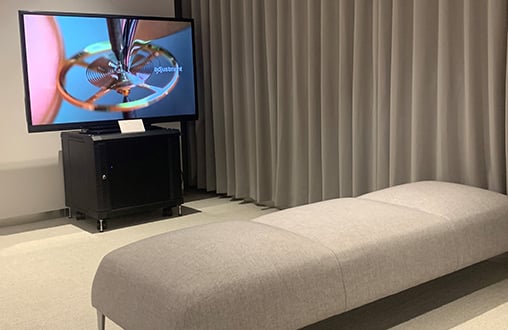
This is Grand Seiko
Enjoy the manufacturing process of a Grand Seiko along with the music. See inside the watch factories, including Shizuku-Ishi Watch Studio, which manufactures mechanical timepieces, and Shinshu Toki-no-Takumi Watch Studio, which makes quartz and spring drive watches.
B1
Extreme times
B1/ Floor map
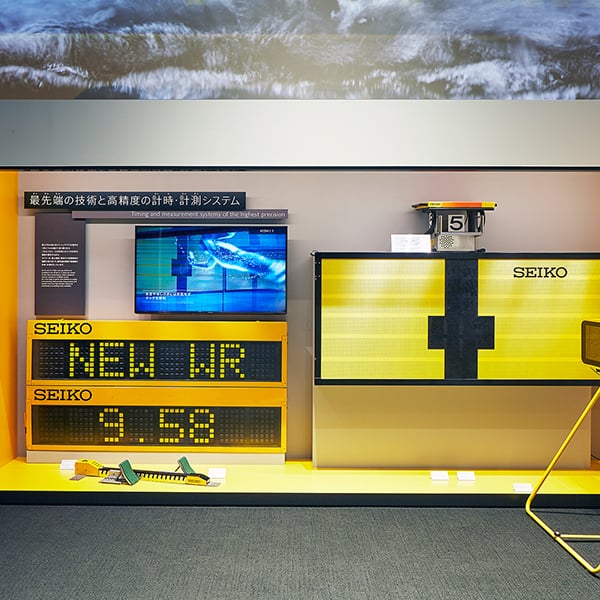
1
Touch Pad and Starting Block of Swimming Time System
The touch panel was designed to ignore water pressure and splashes, only responding to swimmers’ touches. The starting block contained a sensor to measure relay changes, accurately recording the momentary difference in start signals between one swimmer and the next.
- Recommended Points
- This is the actual starting block used by Kyoko Iwasaki when she won Gold at the international sports games that took place in 1992.
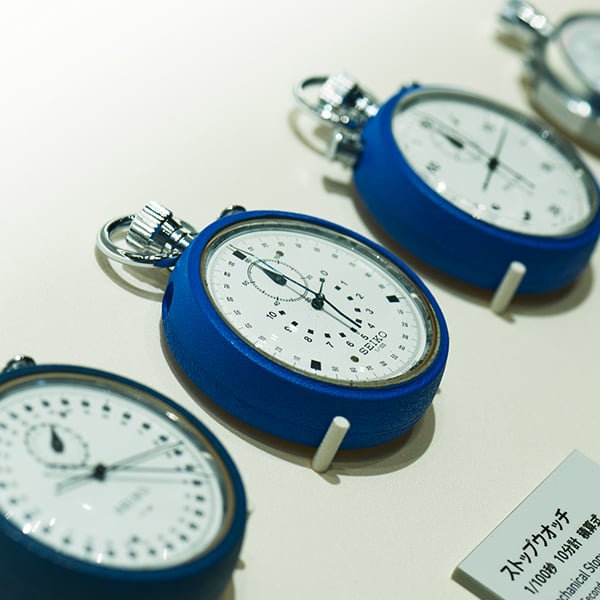
2
Stopwatches for Each Sport
Some of the stopwatches that played a key role in the international sports games that took place in Tokyo in 1964. Their designs with high visibility matched the various event times and rules of the different sports, helping the athletes perform their best.
- Recommended Points
- Stopwatches for each sport are easy to identify using pictograms unique to the Seiko Museum Ginza.
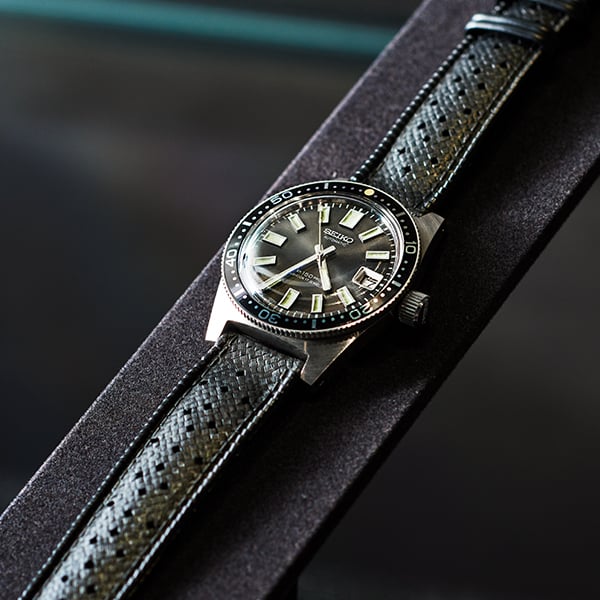
3
Seiko Matic Calendar Diver's Watch
This is Japan’s first diver’s watch, released in 1965. These were used by the 1966 Japanese Antarctic Research Expedition. This impressive timepiece gave rise to many Seiko Diver’s Watches beloved by professional divers and adventurers.
Recommended Movie
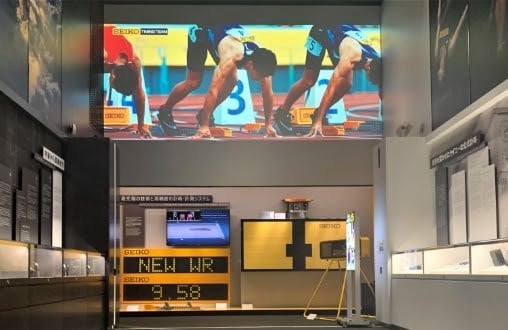
The Story of Seiko Sports Timing
The athletes with Seiko's support, starting with Ryota Yamagata, a Seiko employee, talk about what “time” means to them.
1
The beginnings of time
1F/ Floor map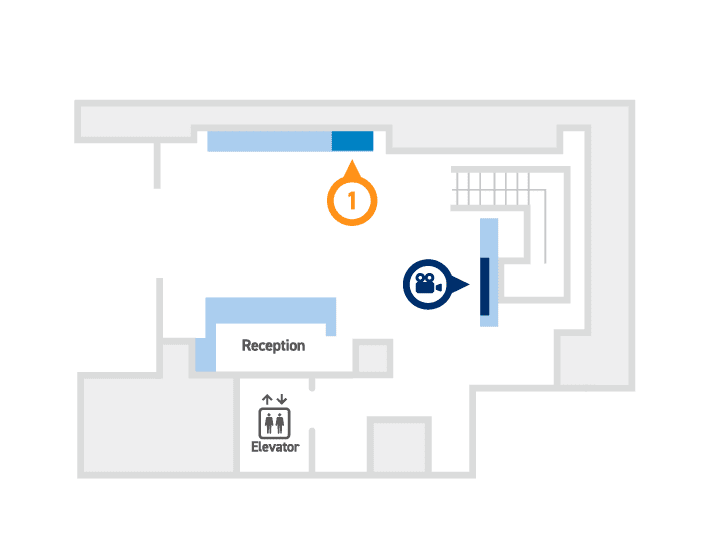

1
Museum Shop
After exploring the Museum, take a look to see what the Museum Shop has to offer. Here you’ll find Seiko Museum Ginza goods that aren’t available anywhere else.
- Recommended Points
- You can buy a range of products inspired by our exhibits. They make great souvenirs or mementos of your visit.
Recommended Movie
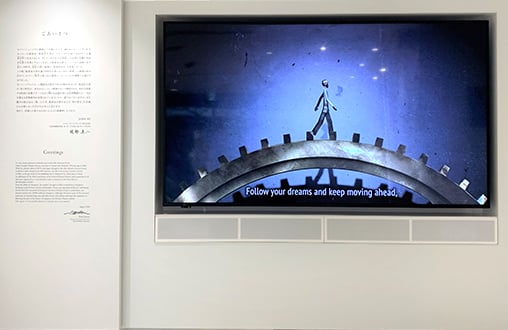
Commemorative Movie of Kintaro Hattori’s 160th Anniversary The Story of Kintaro Hattori
We invite you to view the movie representing his life, symbolized by his words “Always one step ahead of the rest,”
Fascinated by watches and clocks as a young boy, he realized his dream to make timepieces for everyone despite various challenges.
To visit The Seiko Museum Ginza, please make a reservation.













